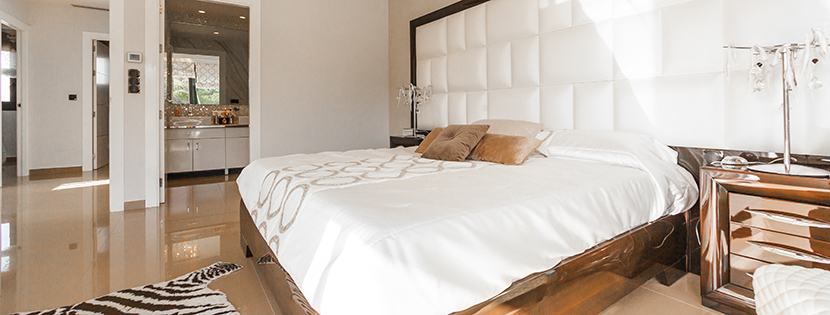Option 1: Smart Bulbs
The easiest step to implement “smart lighting” is to invest in smart light bulbs, which are connected to one overall network, either via Wi-Fi or radio frequency. Thanks to the possibility to connect these light bulbs with Amazon Alexa, Google Home, etc., you can bring smart lighting to every room of your home.
Furthermore, since those light bulbs are using the LED technology, they do not only consume a fraction of a traditional heat developing light bulb, they can also change colours and thereby make the home even more welcoming for the user. However, as you might have already guessed, there is again a catch to it. Starting with controlling of the light bulbs:
The more functions a device have, the more you also have to take into consideration. Whereas bulbs are usually switched on and off with a switch, smart light bulbs often require a hub or special updates in order to fully function. With each update, tracking is required, which can be expensive, when you have to change hubs and foremost tiresome.
Another aspect, which has to be taken into consideration is “reliability”. The more functions and buttons, the higher the possibility that something might not work as expected. In some cases, the lack of reliability can also result in having to do a reset of bulbs via the according hub. In worst case you may find yourself having to return a lot of your light bulbs or getting them replaced under warranty.
Last but not least, other than screwing lightbulbs in their socket, smart light bulbs require technical knowledge, which sets limits to various groups, especially elderly people, which have a harder time to adapt to technical changes.
On the bright side, as technology matures, the higher the reliability is to be expected.
Option 2: Smart hubs for lighting and further applications
Smart solutions by well-known brands offer a broad range, which allow you to implement smart bulbs with all the benefits (and possible catches) and combine them with further applications. By having your lights interact with shutters (natural light) in your house will take away one daily worry, as all would behave automatically without the need to lower blinds and switch lights at certain times of the day. This can be taken further, when further household appliances are added the more and more smart is brought into your home.
Without now going into too much detail of the negative aspects, we shall have only look at one aspect, which definitely has to be taken into consideration: The usage of the central hub!
As the hub is produced by a single manufacturer, you make the whole intelligence of your home depending on that one manufacturer. In bad case, this will oblige you to replace your hub on a regular basis, due to possible hidden flaws (which can be implemented intentionally). And in worst case, the hub might be withdrawn from the market, which makes your investment obsolete.
Therefore, to implement smart lighting and bring intelligence to your home, the solution would be a decentralized system (KNX, for instance).

Option 3: Decentralized home automation
Smart homes and buildings have been existing for more than 30 years – Difference is that we have never noticed them. And not noticing them is the best thing that can happen: The user cannot make changes to the system and thereby ruin the installation, energy savings reach another level and the level of comfort is increasing tremendously. In the end, the user does not have to shout to any boxes to have the light switched off, when the house is left – Timers and sensors will do that automatically.
This of course affects the implementation of smart lighting: Decentralized systems do not depend on a single hub, and in case of failure of one light bulb, all the other light bulbs still run as they were supposed to. The further combination is also easy to realize.
But also decentralized systems have their cons. Foremost, in order to have a smart system installed, a professional installer is required, who integrates the system. Also, in most cases, when changes are necessary, a professional installer needs to be called.
Conclusion:
There are various ways to turn your lighting smart. Depending on your requirements, you already have the choice to either use smart lightbulbs, smart home hubs or a decentralized system. But using smart devices does not automatically make your home smart. The most important is to have a look at your individual needs and how the according solution can help you making your life at home better.
source: www.blog.knx.org